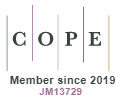Plagiarism Policy
Basic information of the Plagiarism
Plagiarized is that content in one research article which state/explain/contribute in reference to the analysis/discovery/invention subject to one's original work that is not credited by the author (s).
The author neither quoted the original work (words/statement) nor given the credit to the original source.
The author has changed the language of the original content i.e. paraphrasing using synonyms of words or in other ways also.
Not citing the original source or false source.
Fabrication of the data, false result, or copied from old papers, and analysis.
Submission of a similar article published somewhere else.
The similarity checks for plagiarism shall exclude the following, according to UGC Regulation, 2018:
i. All quoted work reproduced with all necessary permission and/or attribution.
ii. All references, bibliography, table of content, preface, and acknowledgments.
iii. All generic terms, laws, standard symbols, and standards equations.
The similarity of text content includes abstract, introduction, hypothesis, observations, result, analysis, and summary of all sections of any research articles. The author's name(s), affiliation (s), email (s), keywords, acknowledgment, and references are excluded from it as mentioned above.
Policy of screening for plagiarism
If the overall similarity index is up to the 10%, only then the manuscript can be accepted for the peer review process, provided individual source contributions shouldn't be greater than 2%. It will be decided further by the editor as per the length of the submitted article.
Again, the similarity index value is not only a criterion to consider the paper for the peer review process. It's quality, significance and genuinity for the research and to the scientific community in the field also matters.
If the similarity index lies between 10 to 30%, it will return to the author with the similarity index report to improve the content.
If the similarity index lies below the 10% but individual source(s) contribution is greater than 3%, in ths case also article return to the authors for the improvement.
If the similarity index lies above to the 30%, paper get rejected irrespective to consider the individual source contributions
Retraction Policy
An article that has been published in the Journal with false information, fabricated/manipulated data, unethical research or duplicate work, plagiarized content, copyright infringement, or any such activities that conflict the research ethics. The editor(s) [Editorial Board Members] will retract the article from Journal as per the COPE guidelines. Please read more about the guidelines here https://publicationethics.org/retraction-guidelines.







